The 300+ Languages Spoken in China
“How many languages are spoken in China?”
Here’s a question we’ve been asked many times, and it’s honestly a very large number!
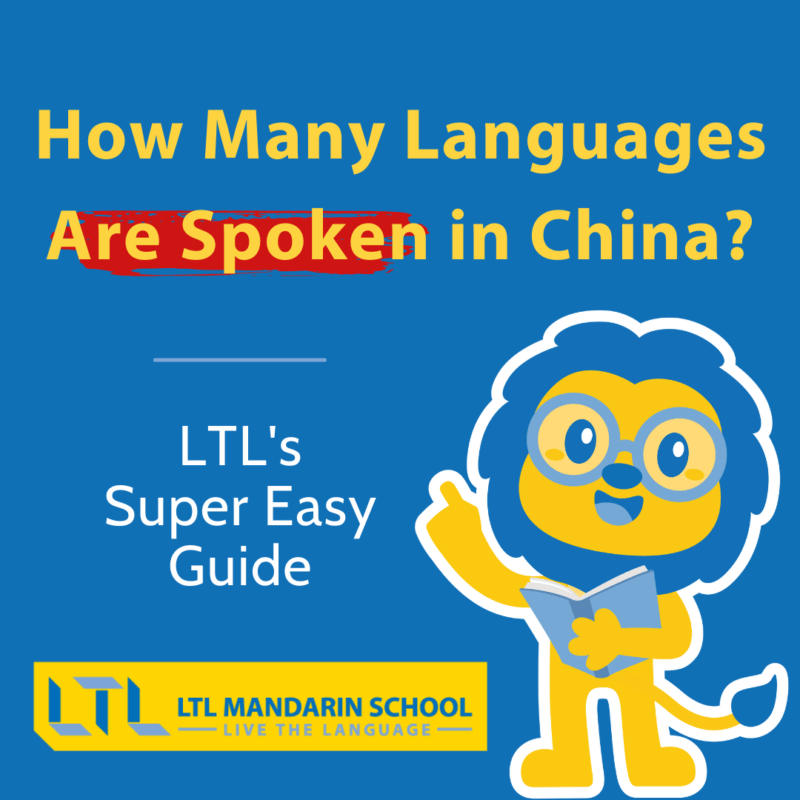
According to Ethnologue.com there are 292 living languages in China. Many others exist, but are extinct today.
You’ve probably heard of languages related to China such as: Chinese, Mandarin, Cantonese, Hokkien, Wu dialect, Fujianese etc.
The goal of this article is to provide you with quick, easy and relevant information about the languages spoken in China, as we know there’s a lot of complex explanations on the internet that are sometimes tricky to make sense of.
First things first, THE most important information to know before reading on is:
Chinese is a GROUP of languages. Not a language itself.
I know, shocking, right? We are so used to hear “I am studying Chinese”, “He can speak a little bit of Chinese” etc.
More on that in a second…
For now, what are the top 3 languages spoken in China?
👉 The top three languages in China are Mandarin Chinese (普通话 Pǔtōnghuà), the official language spoken by over 70% of the population; Cantonese (粤语 Yuèyǔ), mainly spoken in Guangdong, Hong Kong, and Macau; and Shanghainese (吴语 Wúyǔ), a major Wu Chinese dialect spoken in Shanghai and nearby regions.
Languages in China | Language vs Variety vs Dialect
Languages in China | The Main Languages in China
Languages in China | Other Languages Spoken in China
Languages in China | Why so Many Languages?
Languages in China | What Writing Systems Are Used?
Languages in China | Where to Learn Those Languages?
Languages in China | FAQ’s
Here’s an interesting piece of information to get you started on this extensive topic that is the languages of China:
April 20th is Chinese Language Day
Source
Officially called the United Nations Chinese Language Day, the event was established in 2010 to “to increase awareness and respect for the history, culture and achievements of each of the six working languages among the UN community”.
Here are the 5 other official languages of the UN along with their respective observance day: French (20 March), English (23 April), Russian (6 June), Spanish (12 October), Arabic (18 December).
Ok, now let’s get started!

Language vs Variety vs Dialect
To set the record straight, the term CHINESE actually encompass many languages.
We might think of “Chinese” as one unique language, but we couldn’t be further away from the truth!
Chinese is a group of languages, which we will discover in more detail later on.
We then talk about Chinese varieties, and Chinese dialects.
Definition of dialect: “A dialect is a form of the language that is spoken in a particular part of the country or by a particular group of people.”
Definition of variety: “Linguists commonly use language variety (or simply variety) as a cover term for any of the overlapping subcategories of a language, including dialects, jargon, register […]”
Source 1 & Source 2
That’s a bit confusing, isn’t it?
John McWhorter shares in his essay What’s a Language, Anyway? a very useful explanation that might help make things more understandable:
“Dialect-language distinction [is] based on “intelligibility”: If you can understand it without training, it’s a dialect of your own language; if you can’t, it’s a different language.”
In the world of Chinese language studies, the term dialect is often used to talk about the varieties of languages spoken in China, even though they are most of the time mutually unintelligible.
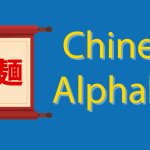
Chinese Alphabet 🗣 What is it? Does it Exist? A Definitive Guide
Does the Chinese Alphabet exist? What’s the history of Chinese Characters? What are the most common Chinese characters? All your questions, answered
The Main Chinese Varieties
The chapter you’ve been waiting for. Here is a list of the main Chinese language varieties, with some explanations provided for each variety.
As mentioned before, even though most varieties of Chinese are mutually unintelligible, it is very common, and accepted for them to be referred as dialects.
There are hundreds of varieties of the Chinese language, but they are usually classified into seven dialect groups.
This classification was officially decided in 1961, following Yuan Jiahua‘s research on China’s dialects.
Three more were added in Language Atlas of China (1987) by Li Rong, a Chinese linguist best known for his work on the classification of the Chinese dialects. He is the founder of the official nomenclature of the major Chinese varieties 方言 (fāngyán).
The first seven groups classification follow the geographical locations from North to South.
DISCLAIMER – A group can be divided in subgroups, that can be divided again into sub-subgroups! Don’t be too worried though, only a few are very widely spoken and you certainly don’t have to know all of them.
All of these varieties are part of the Sino-Tibetan language family.
More on that later!
Refer to this map to check out the location of each group:
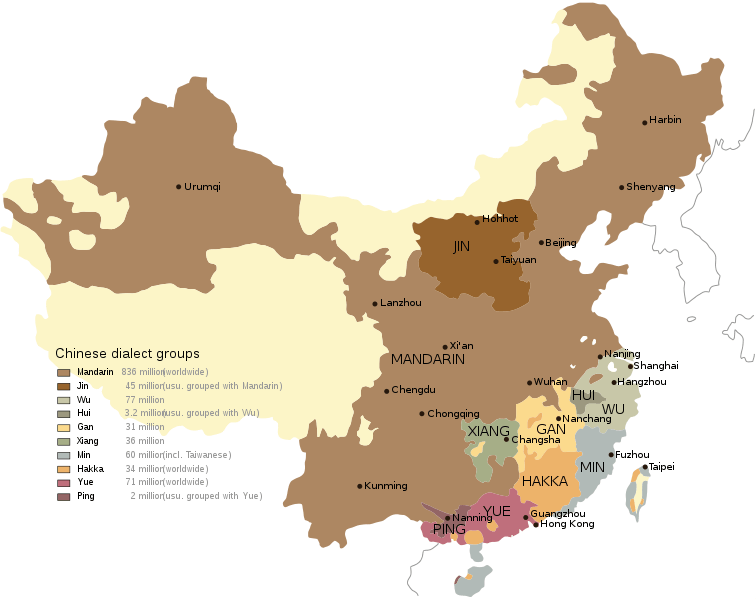
Mandarin 官话 (guānhuà)
Mandarin is the most spoken variety of the Chinese language.
It includes the Beijing dialect, which itself includes Standard Chinese, or 普通话 (pǔtōnghuà) the official language of mainland China and Taiwan. This group also includes Sichuanese and the Dungan language.
Standard Chinese, also called Standard Mandarin or Mandarin, is the dialect taught to foreign students as it is the most spoken and official language of the country.
In general, the term “Mandarin” refers to Standard Chinese, which is oftentimes miscalled “Chinese”.
NOTE – In Taiwan, the language is referred as 国语 guóyǔ. In Malaysia and Singapore, it is 华语 huáyǔ.
Mandarin is the language variety with the most speakers of all, a total of 920 million native speakers in 2017.
Other names for the language you might encounter are 汉语 (hànyǔ) and 中文 (zhōngwén).
- 汉语 means languages spoken by Han people (around 92% of the population of China)
- 中文 means languages spoken by Chinese people, including other languages spoken by ethnic minorities in China.
📸 On this map the Mandarin group is in dark green, the Jin group is also included as light green.
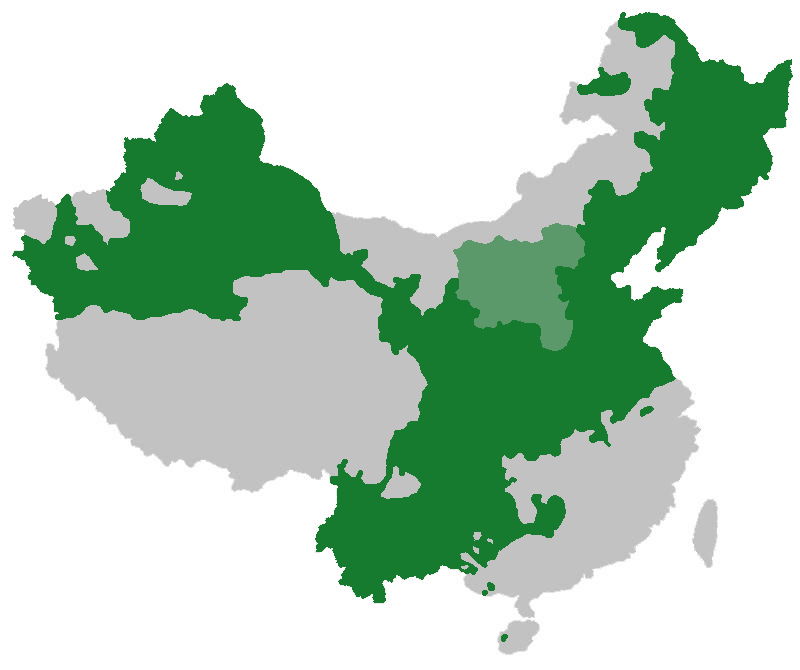
Wu 吴语 (wúyǔ)
This group includes hundreds of distinct spoken forms.
The most famous one is probably Shanghainese. Other forms of the Wu variety are widely spoken in Zhejiang (Wenzhounese), as well as in the south region of Anhui and Jiangsu (Suzhounese).
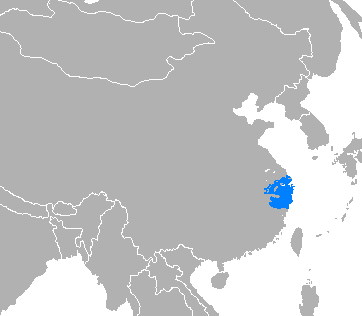
People speaking a dialect of this group will rarely say they speak the “Wu dialect”.
They’ll most often state the variety itself, by attaching the character 话 (speech) at the end of their location.
For example, Shanghainese is 上海话 (shànghǎihuà). Wenzhounese is 温州话 (wēnzhōuhuà). Suzhounese is 苏州话 (sūzhōuhuà), etc.
Commonly called “Wu Chinese”, it is the most ancient variety of all seven, and its origins can be traced back roughly 3,000 years ago.
It is commonly divided into two major groups: Northern Wu and Southern Wu, then again into 6 sub-groups: Taihu, Taizhou, Oujiang, Wuzhou, Chu-Qu and Xuanzhou.
We teach Shanghainese in our LTL Shanghai School, but also online if you’d like to start taking some classes with us!
Gan 赣语 (gàn yǔ)
The Gan variety is mainly spoken in the Jiangxi province, with the Nanchang dialect as a representative.
It is also widely spoken in the neighbouring areas of Hunan, Hubei, Anhui and Fujian.
According to the Language Atlas of China, Gan is divided into 9 groups:
- Nanchang dialect
- Yichun dialect
- Ji’an dialect
- Fuzhou dialect
- Yingtan dialect,
- Daye dialect
- Leiyang dialect
- Dongkou dialect
- Huaining dialect
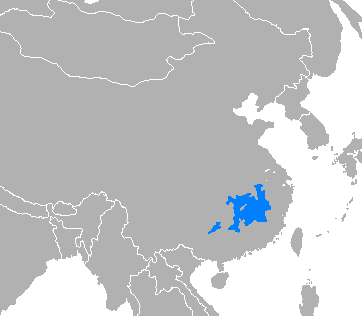
Xiang 湘语 (xiāng yǔ)
The Xiang group is also commonly known as Hunanese and is mainly spoken in Hunan, but also in northern Guangxi and some parts of Guizhou and Hubei.
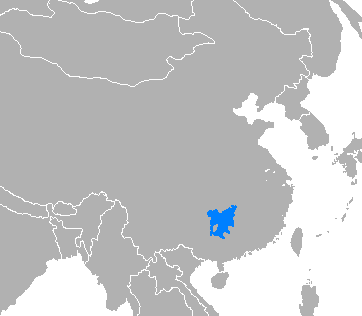
Yuan Jiahua, which we mentioned earlier, classified Xiang into two subgroups: New Xiang and Old Xiang, because of their changes of tones and voicing.
The Changsha dialect usually represents New Xiang, and Shuangfeng dialect represents Old Xiang.
The Language Atlas of China relabelled the New and Old Xiang groups as Chang-Yi and Lou-Shao respectively, and identified a third subgroup, Ji-Xu, in some parts of Western Hunan.
Min 闽语 (mǐn yǔ)
The Min group has the biggest diversity of varieties compared to any of the major dialect groups.
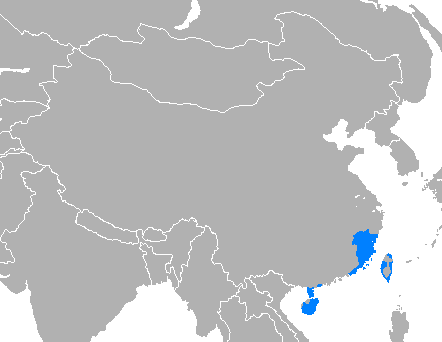
It is widely spoken in the Fujian province and Taiwan, as well as in Hainan, parts of Zhejiang and Guangdong.
The most widely spoken variety of Min outside Fujian is Southern Min, also known as Hokkien-Taiwanese.
Min is divided into two groups: Coastal Min and Inland Min. Each are then divided again:
Costal Min
- Eastern Min
- Puxian Min
- Southern Min
- Leizhou Min
- Hainan Min
Inland Min
- Northern Min
- Central Min
- Shao-Jiang Min
In addition to Shanghainese, we also provide Taiwanese Hokkien classes, both offline at our LTL Taipei School, but also online on our Flexi Classes platform.
Hakka
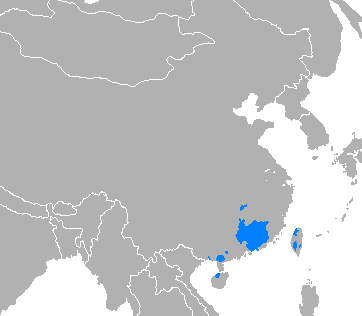
Hakka (not to be confused with Hokkien) is spoken natively by the Hakka people from Southern China and Taiwan, as well as through the diaspora in East and South-East Asia.
Hakka itself developed numerous varieties due to its use in many regions far from each other.
A significant minority of Taiwanese people speak Hakka natively, and Taiwan is actually a study centre for the preservation of the language.
The Meixian dialect of the Hakka group in mainland as been taken as representative of Hakka by the People’s Republic of China.
In Taiwan, Hakka has two main dialects: Sixian (or Haifeng) and Hailu.
Yue 粤语 (yuèyǔ)
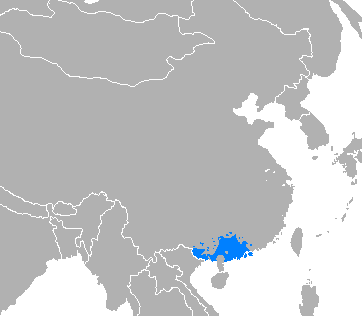
The varieties of the Yue group are mainly spoken in the Southern part of China, namely Guangdong, Guangxi, Hong Kong and Macau.
The most common variety, spoken by millions of people natively, is Cantonese.
In Chinese, Cantonese is called 广东话 (guǎngdōng huà) “the speech of Guangdong”, but is often use to depict Yue as a whole.
Cantonese is, in fact, the official language of Hong-Kong and Macau.
Taishanese, another variety of Yue, was the most common variety spoken until the late 20th century among overseas communities.
As an effort to preserve as many Chinese dialects as possible and continue to spread awareness about the language history, we also provide Cantonese classes to our students.
You can find them on Flexi Classes, along with our other dialect courses.
Jin 晋语 (jìn yǔ)
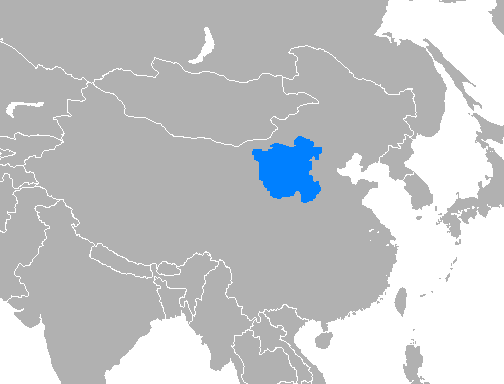
Jin is a variety of Chinese spoken by more than 60 million people in Northern China, including most of the Shanxi province, Inner Mongolia and neighbouring provinces such as Shaanxi (not Shanxi), Hebei and Henan.
It was previously included in the Mandarin group but Li Rong decided in 1985 that Jin should be considered a group in itself, and added it to his classification.
However, many linguists disagree on this decision.
In the Language Atlas of China, Jin was divided into 8 subgroups:
- Bingzhou
- Lüliang
- Shangdang
- Wutai
- Da–Bao
- Zhang-Hu
- Han-Xin
- Zhi-Yan
Huizhou 徽语 (huī yǔ)
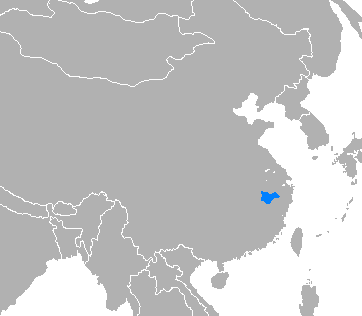
In the past, Huizhou (also referred as Hui) was assigned to either the Wu, Gan or Mandarin group, as it shares many similarities with them and was difficult to classify.
Also known as the Hui dialect, Huizhou Chinese it is spoken in the small area of Huizhou in southern Anhui as well as in some others in Zhejiang and Guangxi.
Compared to other dialect groups Huizhou is indeed spoken in a very small area, but it still has a lot of varieties in itself.
Even more so, that it said varieties change from village to village, people not being able to understand each other despite their closeness.
Just like the Jin variety, many linguists disagree with not integrating Huizhou to another bigger group.
Pinghua 平话 (píng huà)
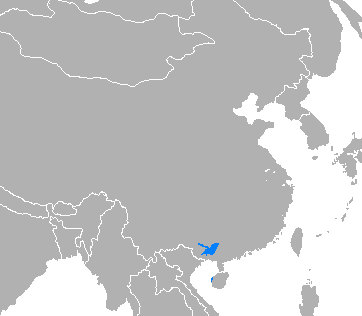
Pinghua (also referred as Ping) is mainly spoken in the Guangxi region, as well as parts of Hunan.
It used to be included in the Yue dialect group but in the 1980’s was designated as a separate variety.
There’s actually two forms of Pinghua:
- The Northern Pinghua is mainly spoken in northern Guangxi and some parts of Hunan.
- The Southern Pinghua is spoken in southern Guangxi,.
Here’s the end of the list for the main varieties of languages in China.
A LOT of Chinese varieties remain unclassified, so if you keep researching deeper into this topic you will probably encounter many other dialect groups and varieties we haven’t mentioned on this page.
We bet you didn’t realise the Chinese language would be this complex, right??
Here’s a quick summary:
| Variety | Chinese name | % of native speakers |
|---|---|---|
| Mandarin | 官话 guān huà | 65.7% |
| Min | 闽语 mǐn yǔ | 6.2% |
| Wu | 吴语 wú yǔ | 6.1% |
| Yue | 粤语 yuè yǔ | 5.6% |
| Jin | 晋语 jìn yǔ | 5.2% |
| Gan | 赣语 gàn yǔ | 3.9% |
| Hakka | N/A | 3.5% |
| Xiang | 湘语 xiāng yǔ | 3.0% |
| Huizhou | 徽语 huī yǔ | 0.3% |
| Pinghua (and others) | 平话 píng huà | 0.6% |
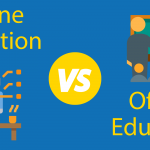
Online vs Offline Learning 📚 Pros and Cons of Each Side
Online vs Offline Learning – Find out what’s best according to your situation and your individual needs. Do you research, take your time, decide!
Other Languages Spoken in China
It’s not over yet!
Many other languages are spoken in China, and most of them not from the Sino-Tibetan language family like the ones in the previous chapter.
Let’s start off this chapter with a definition of what is a language family:
“A language family is a set of languages deriving from a common ancestor or parent. Languages with a significant number of common features in phonology, morphology, and syntax are said to belong to the same language family.”
Source
We’ve mentioned this term before, so here’s a definition for Sino-Tibetan language family as well:
“Sino-Tibetan languages [are a] group of languages that includes both the Chinese and the Tibeto-Burman languages. In terms of numbers of speakers, they constitute the world’s second largest language family (after Indo-European), including more than 300 languages and major dialects.”
Source
Now that’s explained, the following information about the other languages in China will hopefully be a bit clearer.
In this chapter, we will introduce each of the language families spoken in China.
Please keep in mind that each family has an extensive list of spoken languages worldwide, so we’ll only list the main ones spoken in China.
- Sino-Tibetan family
- Tai-Kadai family
- Hmong–Mien family
- Austroasiatic family
- Turkic family
- Mongolic family
- Tungusic family
- Koreanic family
- Indo-European family
- Austronesian family
Refer to the following map for a visual aid whilst reading more.
Keep in mind that this map dates from 1990 whilst the information on this page is more recent, so you might find some discrepancies:
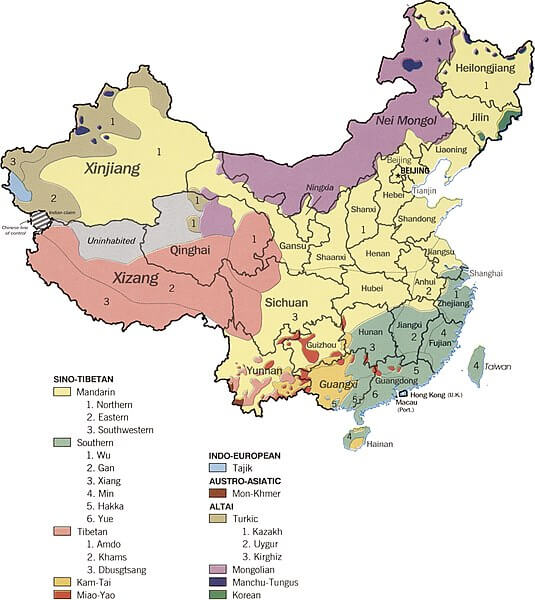
The Sino-Tibetan Family
We’ve mentioned this family several times in this article already, so you might already have an idea of what it represents.
The Sino-Tibetan family includes more than 300 languages, such as the Chinese languages, Burmese, and Tibetic languages being the bigger ones.
They are distributed in the East, South and Southeast Asia, including the Himalayas and Tibetan plateau.
It is the second biggest language family in the world in terms of native speakers, most of them living in the East of China.
All varieties mentioned above in the “main languages in China” chapter are from this language family. Here is some more information:
From this language family, Standard Chinese is the official language of mainland China, Taiwan and Singapore with Chinese languages spoken by 1.3 billion people.
Burmese is the official language of Myanmar and is spoken natively by around 33 million people.
The Tibetic languages are spoken by around 6 million people, descending from old Tibetan, and are spoken natively in the Tibetan plateau as well as part of the Himalayas and western Sichuan.
In China, the Sino-Tibetan languages are spoken by 19 official ethnicities.
The Tai-Kadai Family
The Tai-Kadai languages are also called Kra-Dai, and can be found in Southern China, Hainan Island, Indochina and Northeast India.
Two languages you might know, or heard of, from this family are Thai (national language of Thailand) and Lao (national language of Laos).
Tai-Kadai languages are spoken by about 93 million people, most of whom speak Thai (around 60%).
In China more specifically, we can find the following languages:
- Kam-Sui. Spoken by the Kam–Sui peoples in eastern Guizhou, western Hunan, and northern Guangxi.
- Northern Tai. Includes the Zhuang languages (Guangxi, part of Yunnan and Guangdong) and Bouyei language (southern Guizhou).
- Central Tai. Includes some dialects of Zhuang, as well as dialects from northern Vietnam.
- Kra. Also known as Geyang or Kadai is spoken in Guizhou, Guangxi, Yunnan and northern Vietnam (Hà Giang Province).
In China, the Tai-Kadai languages are spoken by 9 official ethnicities.
The Hmong–Mien Family
The Hmong-Mien languages are spoken in southern China and Southeast Asia.
Hmong-Mien was originally classified as part of the Sino-Tibetan family, but Western linguists agreed that it would be better classified as its own family.
Hmong-Mien is also called Miao-Yao, its Mandarin name is 苗 miáo and 瑶 yáo.
DID YOU KNOW | We covered all 56 Chinese ethnicities including Miao and Yao in another article. If you’d like to know more about them, click the link.
In China, the Hmong-Mien languages are spoken by 3 official ethnicities.
The Austroasiatic Family
The Austroasiatic languages are also known as Mon-Khmer and can be found in Southeast Asia, through Southern China, Thailand, Nepal, India and Bangladesh.
Austroasiatic languages are spoken by around 117 million native speakers, with 168 languages recorded.
However, only two of them have an official language status: Vietnamese in Vietnam and Khmer in Cambodia.
In China, Austroasiatic languages are spoken by 4 official ethnicities, with the following languages:
- Palaung, also known as De’ang. Spoken by the De’ang ethnic minority group in Yunnan province.
- Blang. Spoken by the Blang ethnic minority group from Yunnan province.
- Gin. Spoken by the Gin people (or Jing), a community of descendants of ethnic Vietnamese people living in Guangxi.
- Wa. Spoken by the Wa ethnic minority group in Yunnan province.
The Turkic Family
The Turkic languages are spoken in a wider variety of areas.
These include Eastern Europe and Southern Europe, Central Asia, East Asia, Siberia and Western Asia.
170 million people speak a Turkic language natively.
Turkish is the main language of this family, being spoken by 40% of all native speakers.
In China specifically, we can mainly find the following Turkic languages:
- Uyghur. Spoken by the Uyghur people in Xinjiang province.
- Salar. The Salar people mainly live in the provinces of Qinghai and Gansu in China; some also live in Ili, Xinjiang.
- Ili Turki. Spoken primarily in Xinjiang, China.
- Western Yugur. Speakers reside primarily in the western part of Gansu province, China.
- Äynu. Spoken in Xinjiang, China. A mixed language of Turkic grammar, essentially Yugur but Iranian vocabulary.
In China, the Turkic languages are spoken by 7 official ethnicities.
The Mongolic Family
The Mongolic languages are spoken mainly in Mongolia and surrounding areas, as well as in Xinjiang and Qinghai in China, and in Kalmykia, Southern Russia.
There are about 6 million speakers of Mongolic languages, the most commonly known being Mongolian, spoken in Mongolia and Inner Mongolia by 5.2 million people.
In China, Mongolic languages are spoken by 6 official ethnicities:
- The Dongxiang people of Gansu Province
- The Monguor (or Tu people) of Qinghai and Gansu Provinces
- The Daur people of Inner Mongolia and Heilongjiang Province
- The Bonan people of Gansu and Qinghai Provinces
- Some of the Yugurs people of Gansu Province
- The Kuangjia Hui of Qinghai Province
The Tungusic Family
The Tungusic languages, also known as Manchu-Tungus, are spoken in Manchuria and eastern Siberia.
Compared to other language families that boast millions of native speakers, there are only about 75,000 native speakers of the Tungusic languages, making it an endangered language family like many others.
In China specifically, we can mainly find the following languages:
- Manchu. Spoken by the Manchu ethnic minority group in Northeast China, Manchuria.
- Xibe. Also known as Sibe, it is spoken by the Sibe ethnic minority of Xinjiang province.
- Nanai. Also called Hezhen, it is spoken by the Nanai people in Heilongjiang and Jilin provinces.
The Tungusic languages are spoken by 5 official ethnicities in China.
The Koreanic Family
The Koreanic family includes the Korean language and the Jeju language.
The languages of the Koreanic languages are commonly called “dialects”, but can be divided into 3 separate entities: Korean language, Jeju language, Yukchin dialect.
The Yukchin dialect of the Korean language is spoken in northern Korea as well as in diaspora communities in northeast China, most specifically in Jilin province and is a recognised minority language.
It is also very often referred as the Korean Chinese language.
The Indo-European Family
The Indo-European family is a very large one that covers western and southern Eurasia.
To quote this source, “It comprises most of the languages of Europe together with those of the northern Indian subcontinent and the Iranian Plateau“.
This family would need a whole article on its own, so we’ll only talk about its presence in China more specifically.
As you may have guessed from the order of this list, the Indo-European languages are not widely spoken in China, but those who are are still worth a mention.
Here are some Indo-European languages still spoken in China:
- Macanese Portuguese. A Portuguese dialect spoken in Macau by roughly 1% of the population.
- Sarikoli. Spoken by the Tajik people living in Xinjiang province.
Feel free to consult the list of all existing Indo-European languages on this page here.
The Indo-European languages are spoken by 2 official ethnicities: the ethnic Russians (or Russian Chinese) and Tajiks.
The Austronesian Family
We can find Austronesian languages spoken throughout Maritime Southeast Asia, Madagascar, the islands of the Pacific Ocean and Taiwan, as well as in continental Asia.
According to linguists, the place of origin of this language family is Taiwan, which itself possesses Formosan languages.
The Austronesian family is the fifth-largest language family by number of speakers, with 386 million speakers worldwide.
The Gaoshan people, also called Taiwanese indigenous people or Austronesian Taiwanese, are the only official ethnic group speaking a language from the Austronesian family.

Things I Wish I Knew Before Coming To China 🧳 (Top 12 To Remember)
Moving to China? Learn from the mistakes the LTL team. It’s different to what you are used to, be prepared with our handy list of ultimate pre-China tips.
Why so Many Languages in China?
This is a very good question, and again, the answer is extensive.
To keep it short, China has a very long history of thousands of years (3,500 of written history to be precise) and its territory didn’t always look like the one you know today.
Kingdoms were unified and territories expanded, with large groups of people bringing in their own languages, traditions and foods, creating this rich linguistic culture we know today.
Over time, many languages in China went extinct and despite the strong promotion of Standard Chinese as the national language after 1912, many languages and dialects kept their identity and are still very well preserved today.
One of the reasons for this linguistic preservation is geographical. Indeed, many refugees settled in remote and isolated areas for safety, and did not have much contact with the neighbouring regions.
Their languages didn’t receive any, or very little, influence from the outside groups, and thus couldn’t evolve like many others did.
As we saw before, some groups can understand each other (mutually intelligible languages) whilst others can’t (mutually unintelligible languages).
The word “group” might make you think of a small number of people but keep in mind we are talking about millions of people!
Writing System for Each Language
In mainland China, the simplified characters system is used as the standardised system since the 1950’s.
Many dialects and minority languages do not have a writing system of their own, and are only spoken languages.
However, even though most of them will be using the simplified system, or no system at all, some will have their own system such as for example:
- The Zhuang languages use logograms (or logographs).
- The Bouyei language uses a writing system based on the Latin alphabet.
- The Blang language has two alphabets based on the Latin alphabet.
- The Nanai language used the Cyrillic script.
- The Manchu langage has its own alphabet.
Since we have a “simplified” system, you might ask, what was the original one?
Original characters are now called “traditional” characters in comparison to “simplified” ones. They have been more or less stable since the 5th century!
Both simplified and traditional characters are used today, so here’s a breakdown of what systems countries are using:
| Simplified characters | Traditional characters |
|---|---|
| Mainland China | Taiwan |
| Singapore | Hong-Kong |
| Malaysia | Macao |
For more details and deeper research about the writing systems of all languages in China, you should refer to this list.


Simplified or Traditional Chinese? Which One Is Right For Me in 2025?
Simplified Chinese vs Traditional Chinese 🤔 This will depend on your goals and where you want to study or live. Let’s help you decide.
Where to Learn those Languages?
Unfortunately, only a few varieties (or dialects, as they are most commonly referred to) are taught nowadays to foreigners.
It is not easy to find a teacher for a minority language, not even mentioning good quality classes.
The most widely taught dialects are Mandarin, as it is the most spoken one, and Cantonese (the 2nd most spoken dialect).
For whatever dialect you wish to learn more about, we strongly suggest you head directly to YouTube for your research.
Sure, you might find blogs and comparison articles on Google, but YouTube has got plenty of videos from native speakers eager to share their language and culture, and you’ll get to actually LISTEN to the dialect.
Here are some examples of videos you can find on YouTube regarding learning Chinese dialects:
At LTL we are trying our best to help preserve these languages of China, but in the face of such a large number, our resources are limited and we need to make choices.
We are offering classes not only for Mandarin Chinese, but 3 other dialects in an effort to increase awareness and help preserve them.
As some of the most widely spoken dialects in China, it made sense for us to offer classes for Cantonese, Shanghainese and Taiwanese Hokkien. Maybe we’ll do more in the future, who knows?
Click on the classes you’d like to more about:
And there you have it. If you read all the way down here thank you so much for sticking with us, we hope you learned a thing or two!
This article was meant for you to get quick answers for your questions about the languages of China, and to help get you started on for deeper research if that’s why you’re here.
Feel free to consult the various sources we added as links throughout this article, and let us know in the comments if you ever have any more useful resources for us to share, or found anything incorrect.
In the meantime, here are some more resources about Mandarin Chinese from our website you might also find interesting:
On a final note, please feel free to send us a message if you are interested in learning any Chinese dialect.
We would be delighted to accompany you with your project, and might even have great tips and tricks to share with you!
FREQUENTLY ASKED QUESTIONS
How many languages are spoken in China?
Here’s a question we’ve been asked many times, and it’s honestly a very large number!
According to Ethnologue.com there are 292 living languages in China, many others are extinct.
The Chinese languages are commonly divided in 10 main groups: Mandarin, Wu, Gan, Xiang, Min, Hakka, Yue, Jin, Huizhou and Pinghua.
What is the official language of mainland China?
The official language of mainland China is Standard Chinese, which is based on the Mandarin dialect of Beijing.
What is the official language of Taiwan?
The official language of Taiwan is Standard Chinese, which is based on the Mandarin dialect of Beijing.
How long is China’s history?
China has the longest continuous history of any country in the world with roughly 3,500 years of written history.
What is the difference between Simplified and Traditional characters?
Simplified characters are used in mainland China, Singapore and Malaysia.
Traditional characters are used in Taiwan, Hong-Kong and Macau.
Traditional characters haven’t changed much since the 5th century, whilst the simplified system was established in the 1950’s.
Where to learn Chinese dialects?
Whilst quality resources to learn Chinese dialects are somewhat difficult to find on the internet, you can still find valuable teaching videos on YouTube.
The best way would be to take classes with a professional language school like LTL. Indeed, we are the only language school to provide Chinese dialects classes (Cantonese, Shanghainese, Hokkien) both online and offline.
Feel free to contact us for more details about our dialects classes.
Want more from LTL?
If you wish to hear more from LTL Mandarin School why not join our mailing list? We give plenty of handy information on learning Chinese, useful apps to learn the language and everything going on at our LTL schools!
Sign up below and become part of our ever-growing community!


 Hi, my name is Mojca! I am from Slovenia and I work as a student advisor at our Shanghai school.
Hi, my name is Mojca! I am from Slovenia and I work as a student advisor at our Shanghai school.


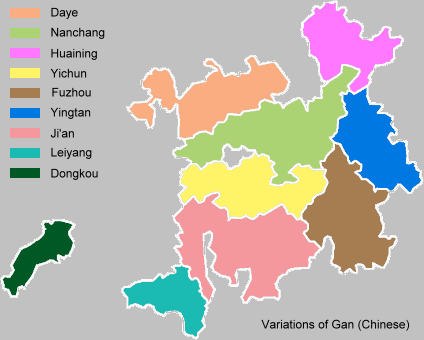





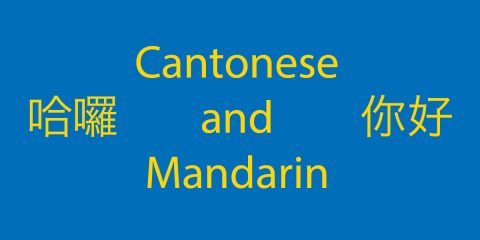
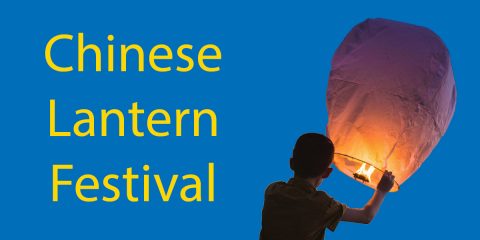
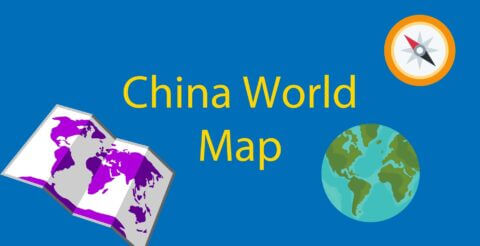

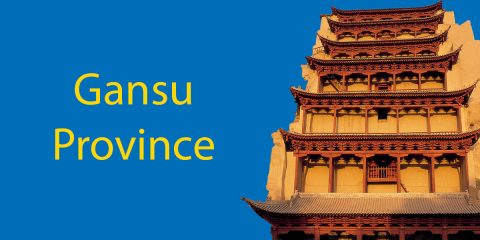
3 comments
[…] written a lengthy article about everything you need to know on the hundreds of languages spoken in China, you should definitely check it […]
[…] in Mandarin speaking regions the character 锅 (guō) is actually used to refer to woks and […]
[…] 92. According to Ethnologue China has 292 spoken living languages. […]